By Carol Inskipp
Carol Inskipp needs no introduction to Indian birders. The books she co-authored are still our most popular field guides. She has extensively traveled around Nepal and has strong alliances with all bird conservation groups in the country. Here, she writes a guest article sharing her insights on Nepal’s only endemic bird – the Spiny Babbler.
Spiny Babbler Turdoides nipalensis has long been considered an enigmatic species. It is thought to be endemic to Nepal. In appearance, it is about the size of a Jungle Babbler, with a more slender bill, a smaller head, and a longer tail. Could it occur in India?
The main distribution of this species lies between west-central and east-central Nepal; it is rare in the far west (with only six records in the last 40 years) and uncommon in the far east of the country (ten records in the last 30 years) despite fairly good observer coverage in recent years. Hence its stronghold is nowhere close to the Indian borders on the east or west. Locally, it also occurs just south of the mid-hills but does not extend to the India-Nepal national border in the south. Could it also occur on the Indian side, in either Uttarakhand or West Bengal/ Sikkim.
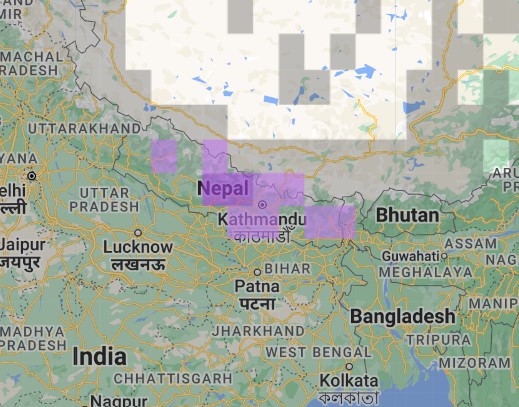
Distribution of Spiny Babbler. Source: eBird.org -accessed on 7 Sept 2023
The only known claim from the Indian side was of a specimen in the Natural History Museum, London, collected by Captain Stackhouse Pinwill at Lohaghat (=Loohoo Ghat), Champawat district, in the 19th century. Lohaghat is about 15 km from the Indo-Nepal border. However, Biswasamy Biswas expressed some concern about the exact locality where this specimen may have been collected and whether it was brought to India by traders from Nepal. He describes Pinwill’s collection as: “well known for its inaccurate locality records on the specimen labels”. Though we may never know how this specimen reached India, it could be worthwhile to search for this bird in suitable habitats for the species in Uttarakhand close to the Nepal border including around Lohaghat and elsewhere in Champawat and Pithoragarh districts.
Similarly, on the eastern side of Nepal towards West Bengal, it has occurred as far as the lower belt of the Kanchenjunga massif, up to about 35–40 km from the international border crestline, and hence searching for the species in suitable habitat in adjacent valleys across the border in West Bengal/ Sikkim could be productive.
Spiny Babbler is a distinctive bird, and it should be easy to identify if you come across one. Its plumage is rather drab, with dark brown upperparts, narrowly streaked pale underparts, and a variably whitish face with a longish, decurved dark bill. Spiny Babbler can be distinguished from similar species by its whitish face, bill shape and colour, and unique shiny black shaft streaks that are noticeable on its pale underparts.
This species was first described to science in 1836 by Brian Houghton Hodgson, a British resident in the Kathmandu Valley, from specimens brought to him by Nepalese trappers (Hodgson 1836). It was not seen again for 111 years. Mrs Desiree Proud, the wife of a British diplomat who had a keen interest in birds, rediscovered the species in her Kathmandu Valley garden in 1947 (Proud 1949, 1959). She found it very common in the Kathmandu Valley and thought the species had gone unnoticed there by other ornithologists, partly due to a lack of knowledge of the species’ calls and song and partly due to its habitat. Spiny Babbler prefers areas of thick scrub rather than tall forests. Ornithologists, with limited time at their disposal, naturally prefer the wonderful forest areas with a great variety of species rather than a scrub that is degraded and difficult to walk through.
The habitat needed by the Spiny Babbler is created and maintained by human activity. Extensive scrub developed in Nepal’s mid-hills following the cutting of primary forest for timber, fuelwood, and other domestic needs of rural communities. Grazing by the villagers’ domestic livestock maintained this habitat, developing extensive scrub cover in the mid-hills. In recent years, the abandonment of farmland has also led to the spread of scrub cover. All these factors are generally true for eastern Uttarakhand as well.
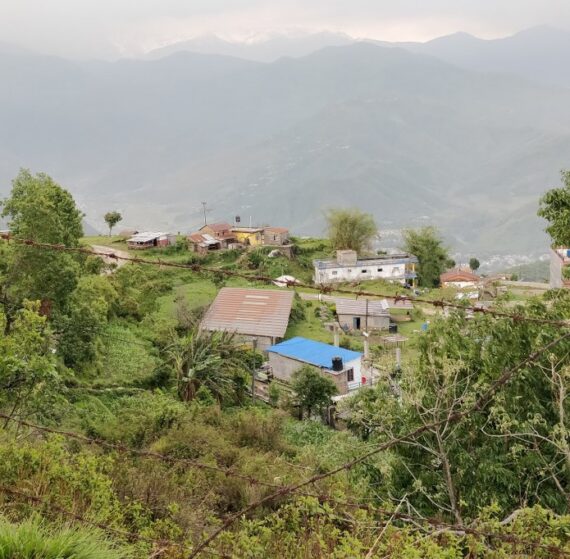
Spiny Babbler Habitat. Photo by Chitra Som
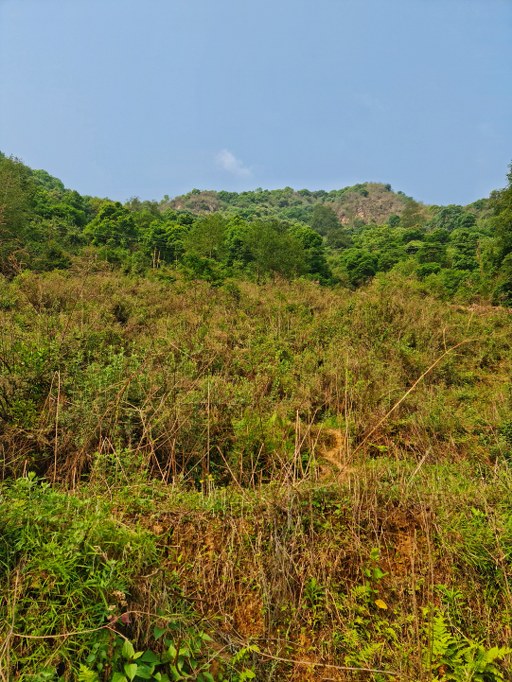
Spiny Babbler Habitat. Photo by Shashank Dalvi
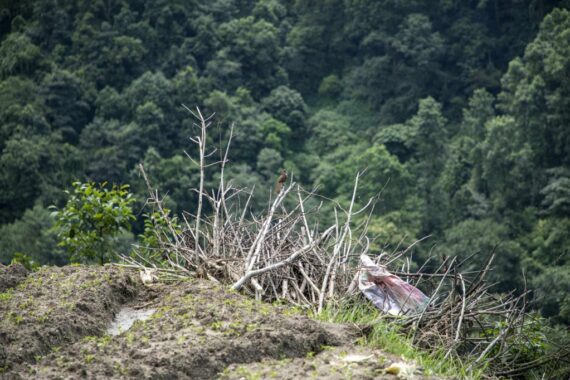
Habitat. Photo by Samyam Rumba
The species is difficult to see except in the breeding season. Males emerge from dense scrub to sing on top of bushes in scrub or near the tops of isolated bushes. In fact, song is the best way to detect the species as it is diagnostic, loud, and there are no other species in that habitat which can be confused with Spiny Babbler. The breeding season, when they sing, typically lasts from April to June, although I have heard males singing conspicuously from tree-tops in early August.
Spiny Babbler is usually confined to its specific habitat of dense scrub on hillsides with scattered trees, within a fairly narrow altitudinal range of 1,500–2,135 m in the breeding season and from 915–1,830 m in winter. It keeps to undisturbed areas and favours thicker vegetation as it is a shy bird. Recent studies in Kaski District in the Annapurna Conservation Area found the species to be significantly impacted by road building, road traffic, and human activities near settlements, including tourism. Finders on the Indian side might keep these in mind. Loss of its scrub habitat was found to be a major factor in reducing populations of the species. In Kaski, Spiny Babbler was also observed in tea plantations and in cardamom, but populations were significantly lower than in the scrub habitats they replaced. I have observed it in coffee plantations too.
When searching for Spiny Babbler, it’s a good idea to take advice from Nepalese birdwatchers, as areas favouring the species vary over the years. For instance, in the Kathmandu valley, it was the most common babbler in cut-over forest between 1,525 m and 1,830 m in the 1950s, but a review of records between 2004 and 2006 found it to be uncommon there. However, in recent years, greater observer coverage of the edges of the Kathmandu valley has resulted in records from several localities, including Bhim Dhunga, Sankhu Salinadi, Bosan, and Ichangu Narayan (see eBird). The Pokhara valley, including Sarangkhot, which is easy to reach and has plenty of accommodation for visitors, is another likely area to look for the species. Other localities where there are good populations include the Gadhi-Siraichuli Important Bird Area, Chitwan district, the Pokhara Valley and around Sarangkhot, Kaski district. Spiny Babbler occurs in a number of protected areas—including Shivapuri Nagarjun National Park at the edge of the Kathmandu valley—but most of the population lies outside the protected area system. It might also be a good idea to make a short trip to the Kathmandu area in April to get familiarised with its preferred habitat and song.
Although the Spiny Babbler is Nepal’s only endemic bird, it is not well known to the general public in the country and has been quite poorly studied. Little is known about its breeding behaviour, for example. Raising the species’ profile in Nepal and carrying out more research are needed now to help secure the long-term future of this enigmatic bird.
Header Image: Spiny Babbler Turdoides nipalensis by Manshanta Ghimire/ Macaulay Library

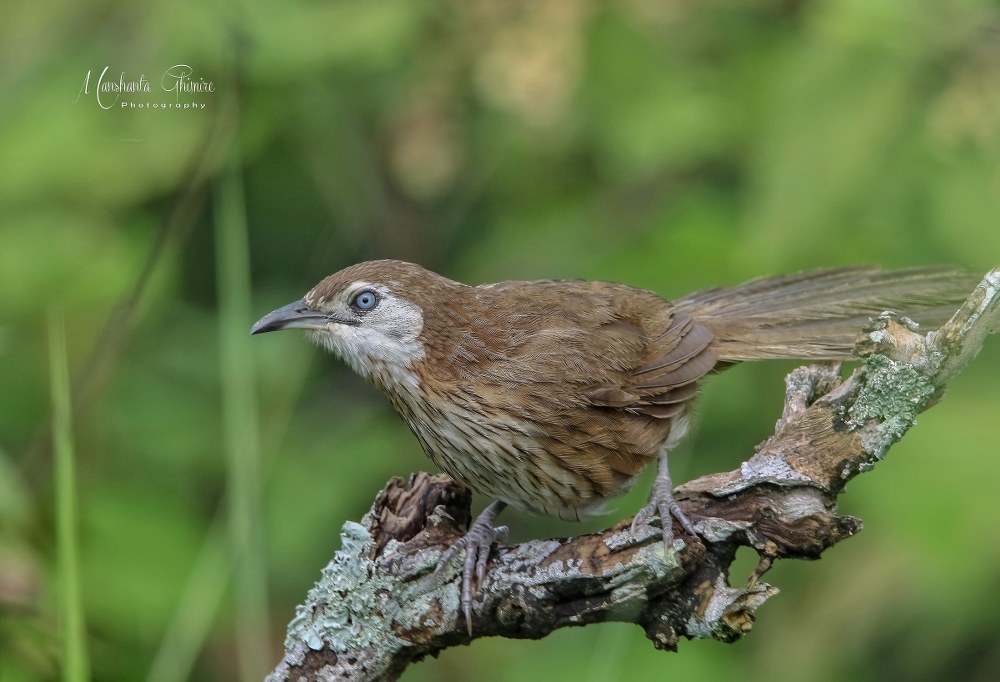
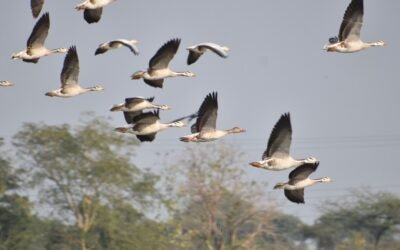
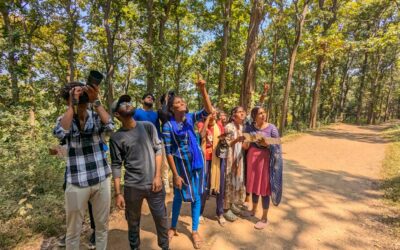
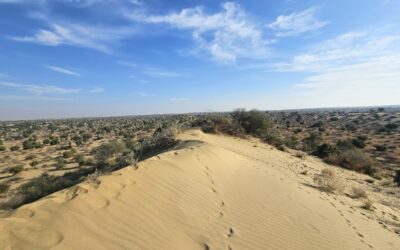
Very interesting article just like Bhutan Laughingthrush
Let’s see in future some individuals locally migrate in winters to hills of Valmiki Tiger Reserve adjacent to Chitwan national park